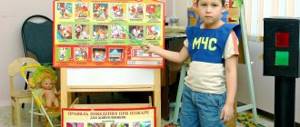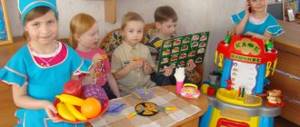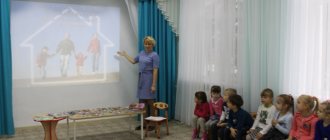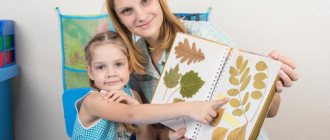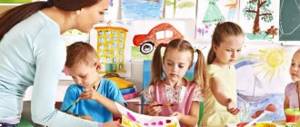Project on life safety in the middle group of preschool educational institutions. Topic: Child safety at home
Project in kindergarten on the topic “Child safety at home.”
Middle group. Presentation Relevance Preschool age is characterized by an increase in motor activity and an increase in the child’s physical capabilities, which, combined with increased curiosity and the desire for independence, often lead to the occurrence of traumatic situations. This fact makes it necessary to begin introducing preschoolers to the basics of safety as early as possible. The child must clearly know that he can be injured. Goal To create conditions for children to develop skills of safe behavior in everyday life, the ability to act adequately in unusual situations. Objectives To organize a subject-development environment on life safety issues. Educational:
- to develop knowledge about sources of danger in an apartment or house;
— enrich ideas about the objective world accessible to the child and the purpose of objects, about the rules for safe use; - promote the formation of healthy lifestyle habits; — introduce basic rules for safe handling of household items. - introduce situations that threaten health. Developmental:
- develop children’s relationships, the ability to act in concert, accepting a common goal, and experience joy from the results of common efforts and joint activities.
- develop the ability to compare and analyze through observations; develop children’s cognitive activity, enriching their ideas about people, objects and phenomena of the surrounding world; — To develop children’s independence, mastery of various methods of action, acquisition of play and communication skills. Educational:
- To foster a friendly attitude in children towards their surroundings;
— Cultivate a caring attitude towards your body. Tasks for working with parents: 1. Increase the competence of parents in matters of children’s safety in the environment. 2. Involve families to participate in the educational process on the basis of pedagogical cooperation. Expected results • Increased competence of parents in the field of children's safety in everyday situations; • Development of physical qualities, strengthening the health of children. • Creating conditions for the cognitive and motor activity of children during a walk, the emotional sphere, solving intellectual and personal problems that are age-appropriate. • Prevention of dangerous situations through various forms of organizing children's activities. Type of project: cognitive-creative, practice-oriented.
Project implementation period: short-term from 03/11/2019 to 03/24/2019. Project participants: children, parents. Children's age: 4-5 years (middle group). Stages of the project:
STAGE 1 - PREPARATORY - Selection of literature: educational, journalistic, fiction for adults and children. — Conversation with parents about the goals and objectives of the project, involving them in cooperation. — Identifying children’s initial knowledge on this topic through introductory diagnostics. — Development of material for the final diagnostic conversation (photos, story pictures, series of questions). STAGE 2 – BASIC 1. With children, look at illustrations, talk, read fiction. 2. Conversation: “In the world of dangerous objects” • continue to familiarize children with electricity and electrical appliances; establish rules for careful handling of electricity and warn against accidents. 3. Quiz “Beware of fire!” • consolidate knowledge about objects that children are strictly prohibited from using, and continue to teach behavior in extreme situations. 4. Conversation “How to protect a child from falling from a window?” 5. For parents, consultations, practical advice, recommendations, parent meetings. STAGE 3 - FINAL In the middle preschool group from 4 to 5 years old, children developed skills of safe behavior in various situations at home and on the street; — stable knowledge of the rules of the road and practical skills of behavior in the playing space are noted; children have an understanding of fire extinguishing means and methods; every child strives for a safe life; - know how and strive to manage their behavior and plan their actions based on primary, value-based ideas about their own safety. Forms of work with parents • Folders were prepared for parents - transfers, reminders, consultations on safety at home; — Practical advice and reminders have been developed for parents on safety issues at home (“Caution, open window!”, “Children’s safety in the hands of parents”, etc.). — Joint events with parents. CONCLUSION It is impossible to achieve positive results without fruitful contact with the family. The experience of safe behavior acquired by children must be reinforced at home in a specific environment. The results of the parent survey showed that they were interested in the work being done. In order for parents to become active participants in shaping their children’s experience of safe behavior at home, a parent meeting was organized. Through conversation, practical exercises, and consultations, she introduced them to methods and techniques for teaching preschoolers safe behavior in everyday life, and parents shared their experience of family education, “played out” problematic situations of interaction with the child, and solved pedagogical problems. The problem of developing the experience of safe behavior in everyday life is important and relevant, and if you approach this issue wisely and take into account the pitfalls, you can achieve remarkable results. References: 1. Belaya K.Yu.
Forming the basics of safety in preschoolers. A manual for preschool teachers and parents. – M.: Mozaika-Sintez, 2011. 2. Fundamentals of life safety for preschool children. Work planning. Conversations. Games. – St. Petersburg: Publishing House “Childhood-Press” LLC, 2011. 3. Shorygina T.A. / “Conversations on the basics of safety with children 5-8 years old” / Moscow “TC Sfera” 2006 - 5-43s Presentation on the topic : Child safety at home
We recommend watching:
GCD summary on fire safety rules for the middle group GCD summary for the middle group on the topic: Safe behavior at home Summary for the middle group on safe behavior at home Entertainment on fire safety in the middle group of kindergarten
Similar articles:
Life safety classes in the middle group. Card file with goals according to the Federal State Educational Standard
Summary of a lesson on life safety in the middle group. Visiting Doctor Aibolit
Summary of a lesson on life safety in the middle group on the topic “Preparation of vinaigrette (salad)”
Safety project in the middle group “We want to be friends with fire”
Type: educational and creative.
Implementation timeframe: long-term.
Project participants: middle school students, teachers, parents.
Goal: expanding and systematizing children’s ideas about fire safety rules.
Program objectives: to clarify and systematize children’s ideas about fire safety rules, electrical appliances and safety rules when using them; develop the ability to apply basic fire safety rules in everyday life, dial the necessary helpline number; develop observation skills, ideas about cause-and-effect relationships, thinking, attention, memory, speech; to cultivate the need to comply with fire safety rules, respect for the firefighter’s profession, and the desire to imitate him in courage and strength.
Problematic situation: a preschool educational institution is located near the emergency response center, so children often hear the howl of a fire truck siren. In this regard, they asked many questions. It turned out that not all students in the middle group know the telephone number of the fire service, fire safety rules, and have no idea about the work of firefighters. How to teach them the basics of fire safety?
Solution: set up a fire safety corner in the group, which will increase the opportunity for children to consolidate their acquired understanding of the basics of safety.
Expected result:
- in everyday life, children will apply available fire safety rules, know the rules for using household appliances, and learn to dial the required helpline number;
- The children will form basic ideas about the work of firefighters, and the students will take part in creating a fire safety corner.
Project implementation stages
I. Preparatory.
Teachers: study the necessary literature, draw up a plan for the implementation of the project, select methods and techniques, develop tasks for parents, select and produce didactic games and manuals.
Children: look at cards and posters depicting fire hazardous situations, asking: “Where is the fire truck going?”, “Why do fires happen?”
Parents: talk with children about the dangers of playing with fire, read them fiction on this topic.
II. Main stage.
Teachers: compiling a card index of didactic games, choosing a place for a fire safety corner, modeling it, selecting works of children's literature.
Children: educational area “Child and Society”.
Activities: “For fun and games, don’t pick up matches!”, “If there is a fire,” “Electrical appliances,” “New Year’s incident with bunnies.”
Cognitive practical activity.
Targeted walks to the fire station, an excursion to the safety room, a visit to the laundry (familiarity with the rules for handling an iron), watching the cartoon “Spasik on Fire.”
Artistic activity.
Fine - modeling “Bucket”, drawing “Fire Truck” based on the poem “Cat’s House”, applique “Fire Escape”; artistic and speech - reading: S. Marshak “Fire”, “Cat’s House” (abbreviated), K. Chukovsky “Confusion”, “The Tale of a Naughty Cockerel” (based on the fairy tale by K. Ushinsky “Know how to wait”), “Zayushkina hut" (based on a Russian folk tale), S. Mikhalkov "Uncle Styopa"; dramatization game “Cat's House” (excerpt from a fairy tale); entertainment “Fire Safety Minutes with Dunno.”
Game activity.
Didactic games: “Guess the riddle from the picture”, “What kind of fire is it?”, “It burns or doesn’t burn”, “What’s extra?”, “Wonderful bag”, “Help the fire truck find its way”, “What does a fireman need?”, “Objects are sources of fire”, “The ABCs of safety”, “Good and bad”, “Complete the sentence”, “If there is a fire”, “It is possible - it is not possible”; role-playing games: “Hospital”, “Fire in the house”, “We are firefighters”, “Firemen are rushing to the rescue”; outdoor games: “Fire bites”, “Who can put out the fire faster”, “Calling help services”.
Communication.
Game situations: “How the car became a fire engine”, “How the foxes found matches”, “Smoke came out of the TV”, “There was a fire in the forest”, “How the bunny called an ambulance”; conversations: “What do I know about the fire?”, “What did the autonomous fire detector tell you?”, “The work of firefighters,” “Things around us” (electrical appliances, gas stove, etc.), “How to protect yourself from fire?”, “What could ruin the New Year's holiday?", "Matches in our house."
Parents: read thematic fiction to the children, together with the children conduct targeted observations “What danger does a gas stove pose”, participate in the drawing competition “Matches are not a toy, fire is not fun”, make attributes for the role-playing game “We are firefighters” (fire truck, shield, etc.).
III. The final stage.
Teachers: design a fire safety corner, organize a play complex, analyze the work done, and present the project.
Children: participate in the implementation of a play complex in the fire safety corner.
Parents: help decorate the fire safety corner, participate in the exhibition of posters “Don’t play with fire!”
G. Atrashkevich
